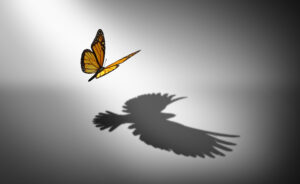From 21st-century blockbusters to the fairy tales we read as children, archetypes are everywhere — and they can be a valuable tool in our personal and professional development too. Lucy Ball, everywoman’s associate trainer, explains how…
1. Archetypes explained…
Archetypes are the characters that appear over and over again in our human mythology — for example the Queen, the King and the Villain. Whether we’re aware of them or not, they help us make sense of the world.
Each of the archetypes represents a particular set of qualities. By comparing ourselves to these archetypes and what they stand for, we have a fun way of exploring aspects of ourselves and the people we are.
However, the psychologist Karl Jung believed that our relationships with these archetypes goes even deeper. From its original Greek roots, archetype means ‘the first molding’ — a template from which copies are made. He suggested that we’re born with a sense of these templates already inside us. For example, if a duck hatches and sees a person rather than its mother, it treats that person as its mother. From this, Jung posited that archetypes exist in our subconscious mind too.
2. Why are archetypes useful?
By thinking about the archetypes that are alive in your story of yourself, and developing your self-awareness around them, you can evolve as a person and a leader.
The archetypes Lucy focuses on are listed below. Which ones do you most identify with or recognise as something that you’ve once been in your life?
- The Maiden: pure, innocent, naïve and fragile.
- The Lover: seductive, attractive, artistic, beautiful, who represents intimacy and close relationships.
- The Explorer: free, nature-loving, agile, good with their hands.
- The Warrior/Worker: discipline, knowledge, focus, dutiful.
- The Mother: nurturing, selfless, caregiving.
- The Queen: leadership, loyalty, power, status.
- The Wise Woman: spirituality, wisdom, magic.
- Bawdy Crone: comedy, outrageousness, healing, raucous humour.
Although these are all are traditionally female characters, as archetypes they’re not gender specific. They represent global characteristics that everyone can identify with.
3. How to work with the archetypes
In a poll of everywomanNetwork members, 74% resonated most strongly with the Warrior/Worker. Lucy suggests reflecting on the archetypes and then asking yourself the following questions:
- Which are archetypes are playing out in me now?
- Which archetypes are less conscious?
- Which archetype wants to emerge next?
Another approach is to ask questions relating specifically to each of the archetypes. For example:
Maiden
Which part of me most needs protecting?
Who will I ask for help?
Lover
Which part of me needs to express its beauty?
How could I let more intimacy into my relationships?
Explorer
What is calling to me?
What do I want to explore or create?
Warrior/Worker
Which part of me needs to fight for something?
How will I focus my effort?
Mother/caregiver
Who needs my love and support?
What cause do I most care about?
Queen
How might I need to step into my power?
Over what or whom must I take charge?
Wise Woman
What is my inner wisdom telling me?
How is my wisdom needed in the world?
Bawdy Crone
How could I use humour to create a breakthrough?
How could I be more outrageous?
The questions that resonate most strongly with you are an indication of the archetypal qualities you might want to cultivate in your own life.
4. How to put your archetype insights into action
Lucy suggests starting small. Think of a couple of settings, in or out of work, where you could bring in the qualities of your chosen archetype.
She shares the example of Anna who, four years after leaving a successful job, was invited back to lead a new transformation programme. However, to succeed in the new role, she’d have to work with people who had been senior to her when she last worked there. She was also aware that for her first meeting with the CEO, she’d have to walk past them all to get to the office.
She used the Warrior/Worker archetype to look at who she’d been when she was last at the organisation. She’d worked hard, followed orders and dutifully fought to achieve the goals set by others. This person would walk past the desks with head down, hurriedly, perhaps saluting her seniors.
She then played with the archetype of The Queen. What would it be like to walk through the office really owning some power and adopting a regal air, walking more slowly, greeting people and holding her head high?
Even though Anna remained nervous, she was able to draw on these ‘queenly qualities’ to make that first meeting feel more empowering.
5. Resources
If you want to find out more about archetypes, here are a few places to start…
- The everywomanNetwork webinar: Are you a warrior, magician or queen? How archetypes can help us develop as leaders
- Goddesses in Everywoman and Gods in Everyman, both by Jean Shinoda Bolen
- Womenlovepower.com for a recap of the main archetypes
- Storywell.com for the Pearson-Marr archetypes test





